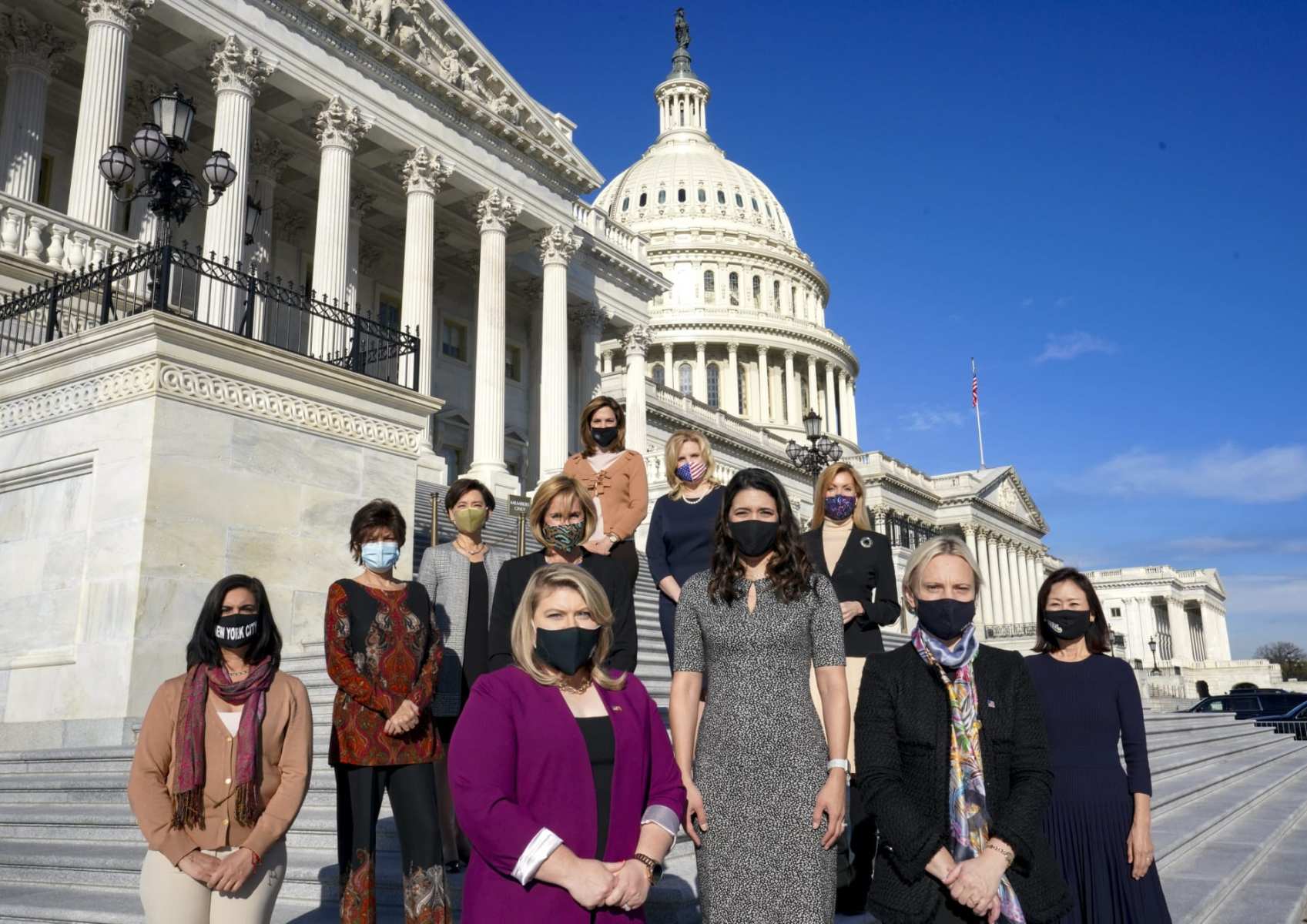Women still hold less than one-third of congressional and state legislative seats after two record-breaking election cycles in which Democratic women drove historic representation gains in 2018, then Republican women rebounded in 2020, according to a new report from Rutgers University’s Center for Women and Politics (CAWP).
As of March 19, women made up 26.4 percent of the U.S. Congress and held 30.8 percent of state legislative seats, the analysis of the 2020 election released by CAWP on Tuesday showed.
Of the 28 non-incumbent women who won seats in the U.S. House of Representatives in 2020, 19 were Republicans, whereas in 2018, just one of 36 non-incumbent women who won House seats was Republican.
In state legislative races, 40 percent of the non-incumbent women who won seats in 2020 were Republicans, up from just 24.5 percent in 2018.
A majority of women candidates and nominees in state and federal legislative races in 2020 were Democrats, however, and Democratic women still outnumber Republican women in office at those levels of government by at least a two-to-one margin, the analysis showed.
The 2020 elections sent a record number of women of color to Congress and state legislatures, though, like for women overall, the gains were more modest than in 2018.
In 2020, Missouri elected its first woman of color to Congress, with Democratic Rep. Cori Bush now serving her first House term. Washington state elected its first Black woman to Congress, with Democratic Rep. Marilyn Strickland representing a district that includes the state’s capital. Strickland is also one of the first Korean-American women to serve in Congress, along with Republican Reps. Young Kim and Michelle Steel, who were both elected in November by their Southern California districts.
As of mid-March, in the 435-seat House, there were 117 women, 87 Democrats and 30 Republicans. That does not include Republican Julia Letlow, who won a special election Saturday in Louisiana but has not yet been sworn in. In the 100-seat Senate, there are 24 women, 16 Democrats and eight Republicans. As of January 19, there were 2,277 women serving in state legislatures, but the net gain of 116 women nationwide represented a nominal increase, from 29.3 percent to 30.8 percent, according to the CAWP analysis.
In House races, many of the seats women picked up in the 2018 and 2020 elections were in especially competitive districts, making them vulnerable in future reelection bids, the report noted. Of the 36 non-incumbent women who won House seats in 2018, 21 were Democrats who flipped Republican-held districts. In 2020, of the 28 non-incumbent women who won, 14 flipped their districts, including 11 Republicans who won in a district previously represented by a Democrat and three Democrats who did the reverse.
“These successes reveal women’s capacity to win in the most competitive districts, reaffirming their electoral viability and combating concerns that being a woman is an electoral liability,” the report said. “However, winning in the most competitive districts also means that women will continue to face tough reelection contests.”
For example, five of the Democratic women who flipped districts to win in 2018 lost their seats in 2020.
Whether women continue to make gains in the state and national legislatures depends in large part on political parties’ efforts to attain parity when they are recruiting candidates and supporting them at their earliest stages. And women’s overall successes in 2022 specifically are likely to hinge on Republican efforts since midterm elections historically favor the party not in the White House, the report noted.
In 2020, less than one-third of candidates who filed to run in congressional races were women, and women subsequently accounted for less than 36 percent of party nominees, just 27.4 percent of House winners and 20 percent of Senate winners.
“Republican women made up a smaller proportion of their party’s candidates, nominees, and winners for the U.S. House and a smaller proportion of their party’s candidates and nominees for the U.S. Senate than did Democratic women in 2020, with partisan disparities greatest among House nominees and winners,” the report said.
“Success for Republican women in 2022 would require continued — and arguably growing — support for them in candidate recruitment and at the earliest stages of electoral competition. This has been absent in previous elections where Republicans were expected to and did make large gains without seeing much payoff for women specifically,” the researchers said.






